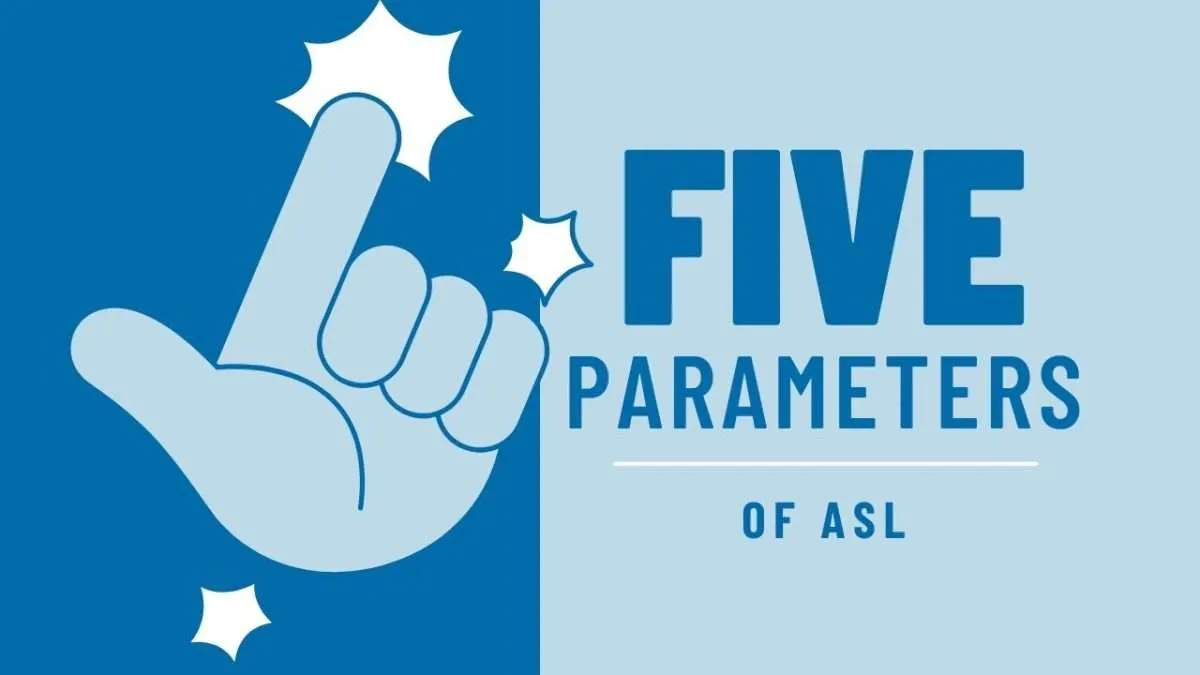American Sign Language, or ASL, is a method of nonverbal communication that primarily relies on the hands to create meaning. Here, we will go over the 5 parameters in ASL and how each component interacts with the others to create a fully-realized and expressive language.
What Are The 5 Parameters of ASL?
The 5 parameters of ASL are:
- Handshape
- Movement
- Location
- Palm Orientation
- Non-Manual Markers
1. Handshape

Handshape is the shape you make with your hand when you are signing in ASL. Today there are over 50 commonly used handshapes.
ASL uses different handshapes to represent concepts and ideas. The use of these handshapes is similar to the use of phonemes in spoken language. When you’re learning ASL, learning the different handshapes makes it much easier to learn the rest of ASL.
2. Movement
Movement refers to the way the hands and arms move while signing.
It can convey different meanings and emotions in language. You can think of movement as contributing to both meaning and tone of voice. Signs often have a set movement, the way you perform that movement can add information to your signing.
In ASL, movement has a lot of modifiers. Movement can be fast or slow, smooth or sharp, straight or curved, left and right, up and down, and more.
While some movements are unique to their signs, most movements fall into one of these categories:
- Moving in a circle
- Up and down motion
- Forward
- Backward
- Tapping
- Back and forth movements
- Wiggling
3. Location

The location you make a sign is another parameter of that sign’s meaning. When you are learning ASL, one of the important things to consider is the “signing space,” which is the three-dimensional space in front of the signer. The signing space goes from the waist to the forehead and from one side of the body to the other. The location of where you sign conveys meaning.
In American Sign Language, signs can be made on various parts of the body. The location movement of the sign is frequently used to demonstrate the subject, object, or location of the sign.
4. Palm Orientation
Palm orientation refers to the direction in which the palm of the hand is facing when making a sign. This is an important part of the meaning of many similar signs, so it is very important to learn how it is used.
In ASL, the hand is held with the palm facing up, down, left, right, outwards, or towards the body. Orientation is not independent; that is, orientation is a part of the sign that conveys definition rather than mood or tense.
Palm orientation can also indicate possession or ownership.
5. Non-Manual Markers

The final parameter of ASL is non-manual markers, often referred to as “NMM.” Non-manual markers include things like facial expressions and body language, and are vital to getting your meaning across. Without your non-manual markers, you are missing an important part of your signs’ meanings!
Non-manual markers include a range of facial expressions, such as raised eyebrows, wrinkled nose, open or closed mouth, and the position, direction, and intensity of your eye gaze.
Want To Learn More About ASL?
If you want to learn more about ASL, the best way to learn is to watch and practice. At Learn Bright, we have hundreds of educational ASL Youtube videos. Follow along with our free lesson plans, to help with student engagement and kinetic learning.







